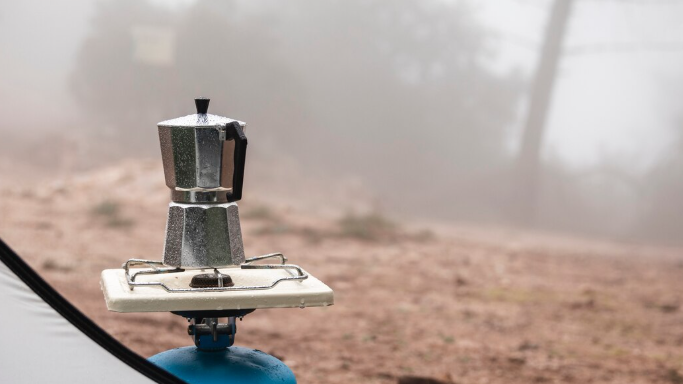Outdoor living has become an essential part of modern homes. From barbecues to heaters, patio gas bottles make it easy to enjoy outdoor comfort and convenience. However, these bottles must be stored correctly to ensure safety, efficiency, and longevity. Improper storage can lead to leaks, corrosion, or even fire hazards.
This comprehensive patio gas bottle storage guide will walk you through everything you need to know — from where to store your bottles to how to maintain them for optimal performance.
1. Understanding Patio Gas Bottles
Before we discuss storage, it’s important to understand what a patio gas bottle actually is.
A patio gas bottle is a type of liquefied petroleum gas (LPG) cylinder, typically filled with propane or butane. These gases are compressed into liquid form and stored under pressure inside metal bottles. They’re commonly used for:
- Patio heaters
- Gas barbecues
- Fire pits
- Camping stoves
- Outdoor cooking appliances
Patio gas bottles come in various sizes — from small portable cylinders for camping to large bottles for home heating. Most patio gas bottles use a clip-on regulator, making them easy to attach and remove from appliances.
2. Why Proper Gas Bottle Storage Matters
Storing patio gas bottles properly is not just about neatness — it’s about safety and performance. Here’s why good storage practice is vital:
a. Prevents Leaks and Accidents
Gas leaks can lead to fire or explosions if exposed to sparks or flames. Secure, upright storage reduces leak risks.
b. Extends Bottle Lifespan
Proper storage helps prevent rust, corrosion, or valve damage caused by moisture or extreme temperatures.
c. Ensures Efficiency
Stable temperature and positioning help maintain consistent gas pressure for smooth appliance performance.
d. Meets Safety Regulations
Following correct gas bottle storage regulations ensures compliance with local laws and reduces liability risks.
3. Where to Store Patio Gas Bottles
The location of your gas bottle storage area is critical. Here’s what to consider:
a. Store Outdoors
Patio gas bottles should always be stored outdoors in a well-ventilated area. Never keep them inside your home, basement, or garage. Propane and butane are heavier than air — meaning that if a leak occurs indoors, gas can accumulate and create an explosion risk.
b. Choose a Level, Stable Surface
Always keep gas bottles upright on a flat, stable surface. This prevents tipping and ensures the safety valve functions correctly.
c. Keep Away from Heat and Flames
Your storage spot should be at least 1.5 meters away from any source of ignition, including BBQs, heaters, electrical outlets, or open flames.
d. Avoid Direct Sunlight
While patio gas bottles are built to withstand high pressure, prolonged exposure to direct sunlight can increase internal pressure. Try to place them in a shaded, well-ventilated location.
e. Distance from Buildings
Keep gas bottles at least 1 meter from windows, doors, or air vents. This minimizes the risk of gas entering your home in case of a leak.
4. How to Store Patio Gas Bottles Safely
Following these storage tips ensures you maintain a safe and efficient gas bottle setup:
a. Keep Bottles Upright
Always store patio gas bottles in an upright position. Laying them on their side can damage the valve and increase leak risk.
b. Secure the Bottle
If you live in a windy area or have uneven ground, secure your bottles with straps, chains, or brackets to prevent them from tipping over.
c. Use a Gas Bottle Storage Cage or Cabinet
A gas bottle storage cage or metal cabinet is an excellent option for extra protection. These cages provide:
- Ventilation on all sides
- Lockable security
- Protection from tampering or accidental knocks
- Compliance with safety standards
Look for weather-resistant cages specifically designed for LPG storage.
d. Keep Valves Closed
Always ensure the valve is fully closed when the bottle is not in use. For added safety, disconnect the regulator if storing the bottle for a long period.
e. Avoid Clutter
Keep the storage area free from leaves, paper, tools, or flammable materials. These can easily catch fire if a leak occurs.
f. Label and Organize
If you have multiple bottles, label full and empty ones clearly. This helps you rotate usage and avoid confusion.
5. Storing Full vs. Empty Bottles
Many homeowners make the mistake of treating empty bottles like full ones. However, both require care.
Full Bottles
- Store them upright and away from heat sources.
- Keep them outdoors and secure from tampering.
- Check regularly for leaks using a soapy water test (never use a flame).
Empty Bottles
- Even if they seem empty, a small amount of gas often remains inside.
- Store them in the same outdoor area as full ones.
- Do not puncture, burn, or attempt to refill them yourself.
- Return empties to your supplier for safe refilling or disposal.
6. Weather Protection Tips
Your patio gas bottle faces the elements year-round, so consider these weather protection measures:
a. Rain and Moisture
Moisture can cause rust or valve damage. Use a plastic gas bottle cover or store the bottle in a ventilated cabinet with a roof.
b. Extreme Heat
In hot climates, keep bottles in shaded areas — avoid enclosed sheds that trap heat.
c. Freezing Temperatures
Propane performs well in cold weather, but butane can struggle to vaporize in freezing conditions. If you live in a cold region, choose propane for better performance.
7. Regular Inspection and Maintenance
Routine checks help you detect issues before they become serious. Inspect your gas bottles monthly for:
- Rust or corrosion on the surface
- Loose or damaged valves
- Worn or cracked hoses
- Gas smell or hissing sounds
If you notice any damage, do not use the bottle. Contact your supplier or a certified gas technician.
Also, check the expiry date printed on the bottle’s neck or handle — typically, bottles must be re-tested every 10–15 years, depending on local regulations.
8. Transporting Patio Gas Bottles Safely
If you need to transport your gas bottle — for example, to refill it — follow these precautions:
- Transport bottles upright in your car’s trunk or back of a pickup.
- Keep windows open for ventilation.
- Do not smoke or use mobile phones near gas bottles.
- Never leave bottles in a hot car, especially in direct sunlight.
- Use a protective cap on the valve during transport.
9. Common Storage Mistakes to Avoid
Even experienced users sometimes overlook small but dangerous details. Avoid these common gas bottle storage mistakes:
- Storing indoors — Never store patio gas bottles inside enclosed spaces.
- Laying bottles horizontally — Always keep them upright.
- Ignoring leaks — A faint gas smell is a warning sign.
- Overcrowding — Bottles need airflow between them.
- Using makeshift covers — Plastic bags or tarps can trap heat and moisture.
- Leaving regulators connected for long-term storage.
- Not checking expiry dates — Expired bottles are unsafe.
10. Safety Checklist for Patio Gas Bottle Storage
Here’s a quick checklist to make sure your storage setup is safe and efficient:
✅ Stored outdoors in a ventilated area
✅ Bottles upright and secured
✅ At least 1.5 meters away from flames or heat
✅ Valves closed when not in use
✅ Labels on full and empty bottles
✅ Regular leak inspections
✅ Weather protection in place
✅ Expiry date checked
If all boxes are ticked, your patio gas storage is both safe and compliant.
11. Eco-Friendly Gas Bottle Practices
Aside from safety, responsible storage also includes environmental care. LPG is cleaner than coal or petrol, but there are still eco-friendly steps you can take:
- Refill instead of replace — Always exchange empty bottles rather than discarding them.
- Choose reputable suppliers who inspect and maintain bottles before refilling.
- Avoid unnecessary leaks — A leaking bottle wastes gas and harms the environment.
- Recycle old bottles through approved gas dealers.
12. When to Seek Professional Help
If you’re unsure about your gas storage setup, it’s best to consult a qualified LPG technician. Seek help if:
- You smell gas but can’t locate the leak
- The valve is damaged or stuck
- The bottle shows signs of corrosion
- You’re installing multiple gas appliances
A certified professional can assess your storage area and ensure it meets all LPG safety standards.
13. Final Thoughts
Proper patio gas bottle storage is all about safety, efficiency, and peace of mind. Whether you’re using a single cylinder for a BBQ or several for heating, following these best practices keeps your family and property safe.
By keeping bottles upright, well-ventilated, and protected from weather and heat, you’ll enjoy a worry-free outdoor experience all year round. Don’t forget regular inspections and timely replacements — small habits that make a big difference in gas safety.



